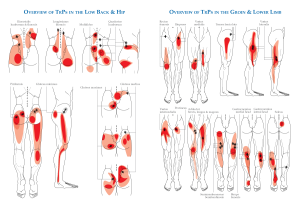Kyphoplasty Procedure: What Is it?

Our spines can be subject to a lot of abuse over the years. They can be injured, have aging-related changes, or simply endure wear and tear from daily activities. These factors may lead to tiny fractures of the stacked bones that make up your spine, called vertebrae.
Vertebral fractures can shrink the height of the vertebrae because of increased force or compression on the bone. This can cause additional symptoms such as:
- Pain. Pain is the most common symptom. Vertebral compression can put pressure on nearby nerve roots or the spinal cord. It is usually localized at the fracture site and is worsened with movement. It can also worsen when bearing weight, such as carrying groceries or suitcases.
- Limited spinal mobility. You may be unable to bend down to pick up things or twist around to reach something.
- Loss of height. Fractures, especially multiple fractures, can weaken the spine further. Over time, it can cause a loss of height.
- Kyphosis. Kyphosis is the forward curving of your spine or a hunched-over posture. This can result from one or multiple vertebral fractures.
The pain from compressed vertebrae is usually managed with conservative treatments such as pain medications, a back brace, and limiting activities.
However, if these measures fail to provide relief, a kyphoplasty procedure may be an option.
What is a Kyphoplasty Procedure?
Kyphoplasty is a minimally invasive surgical procedure. The goal is to restore the length of the compressed vertebrae and strengthen it.
The procedure creates space in the area where the vertebra collapsed, followed by an injection of a cement-like material. This helps to relieve your pain and takes the pressure off your spine.
What Should I Expect Before, During, and After a Kyphoplasty?
Before the procedure
Your neurosurgeon will work with you to help you decide if kyphoplasty is suitable for your condition. They will perform a physical exam and order or review imaging and laboratory tests.
Before surgery, it’s important to tell your doctor about your health conditions. Also, be sure to mention any medications you are on, including over-the-counter products, herbs, vitamins, and supplements. In addition, you should tell them about allergies you may have, such as latex.
During the procedure
The procedure is typically performed in an outpatient setting, meaning you may not need to stay in the hospital and can be sent home on the same day.
On the day of your procedure, an anesthesiologist will provide you with local or general anesthesia, depending on your preference and the neurosurgeon’s needs.
During the procedure, you will be lying on your stomach. You can expect the procedure to last around an hour.
Your doctor will make a small cut on your back and insert a hollow needle. Fluoroscopy, a type of medical imaging, is used to guide the needle into the fractured area.
An inflatable balloon is then inserted through the needle. Your doctor will inflate the balloon to create space for the cement-like injection. Once the space is made, the balloon is removed, and the cement-like material will be injected.
After the procedure
You can expect to spend around an hour to two hours in the recovery room and then be released to recover at home. Make sure someone is available to drive you.
You may feel pain or soreness from the procedure. It should be gone within a few days. You can apply ice to the area to help with the pain or soreness and follow any instructions given by your doctor.
Call your doctor immediately if you experience any symptoms, such as worsening pain, fever, tingling or numbness, or concerns about the procedure site.
Can a Kyphoplasty Procedure Help Me?
If you are experiencing chronic or worsening back pain, a curved posture, or having trouble with mobility, don’t ignore these symptoms. While some people can control pain or symptoms without surgery, others may need a kyphoplasty procedure.
with an experienced neurosurgeon (or get a second opinion!) and start your journey to a pain-free back!




